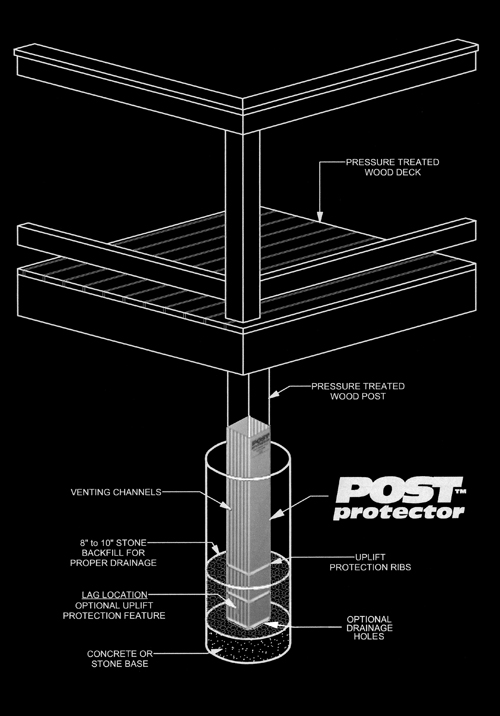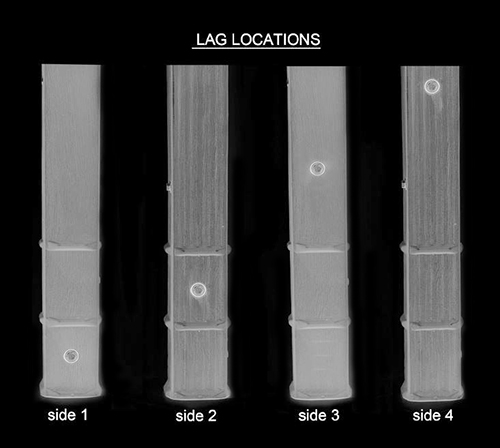42” – Deck, Pergola, Sunroom, Etc.
Installation Instructions – Outdoor Post

Slide the Post Protector over the post. The Post Protector should slide easily over the post & the post’s bottom should contact the bottom of the Post Protector. NOTE: Post Protector’s are designed to project 4”–6”above grade or finished floor height. Post sizes vary. Trimming post corners and lubricating inside the Post Protector are commonly practiced on over-sized posts. Shimming is commonly practiced on under-sized posts.
CALL with any installation questions! 877-966-8768
1. (4) 1/4” galvanized lag screws with sealing washers are provided for each post. There are only (2) designated lag locations (non-textured circles with center dimple) located between the “horizontal” ribs on the Post Protector’s lower section. Start with the lag location between the two lowest horizontal ribs. Pre-drill a perpendicular 3/16” pilot hole then install lag/washer making sure the washer is tight to the Post Protector & post. Next, give the post a ¼ turn and repeat lag installation at 2nd lag location between the 2nd & 3rd horizontal rib. Continue this pattern on the 3rd & 4th side of the post with the lag height position increasing by 6” per side (see images). The lags will join Post Protector to post to utilize the integral post uplift protection.
2. Drill out drainage holes dimples. These dimples are centered on all (4) sides of the base “horizontal” uplift rib. They allow drainage for rainwater running down the post & through the Post Protector. We suggest 4” – 6” drainage stone for initial backfill.
3. Set the post in a typical posthole with desired footing & backfill material. We recommend at least 30” embedment. (Note: If your situation does not allow the top edge of the Protector to be a minimum 4” above grade / finished floor grade, you may increase the footer depth to compensate or remove the bottom of the Post Protector & slide it up the post into position to achieve this, then fasten Protector to post.)
4. Set your string line “above” the top edge of the Post Protectors to align the posts. Or, you may also use a roofing nail or screw to draw the Post Protectors firmly & uniformly against the “outside” of the posts to be sure the string line post alignment is accurate.
5. Post Protectors will show that your postholes vary in depth. If you want the Post Protectors at a uniform height, simply measure & mark to desired height above grade or finished floor. We suggest a minimum of 4”-6”. Trim by dropping a horizontal sawz-all blade on (4) sides, then a corner vertical cut with a utility knife to remove excess material.
6. Any unique installation situations or any questions – 877-966-8768.

Please view Gallery Images to assist in understanding installation. Call with any questions 877-966-8768







